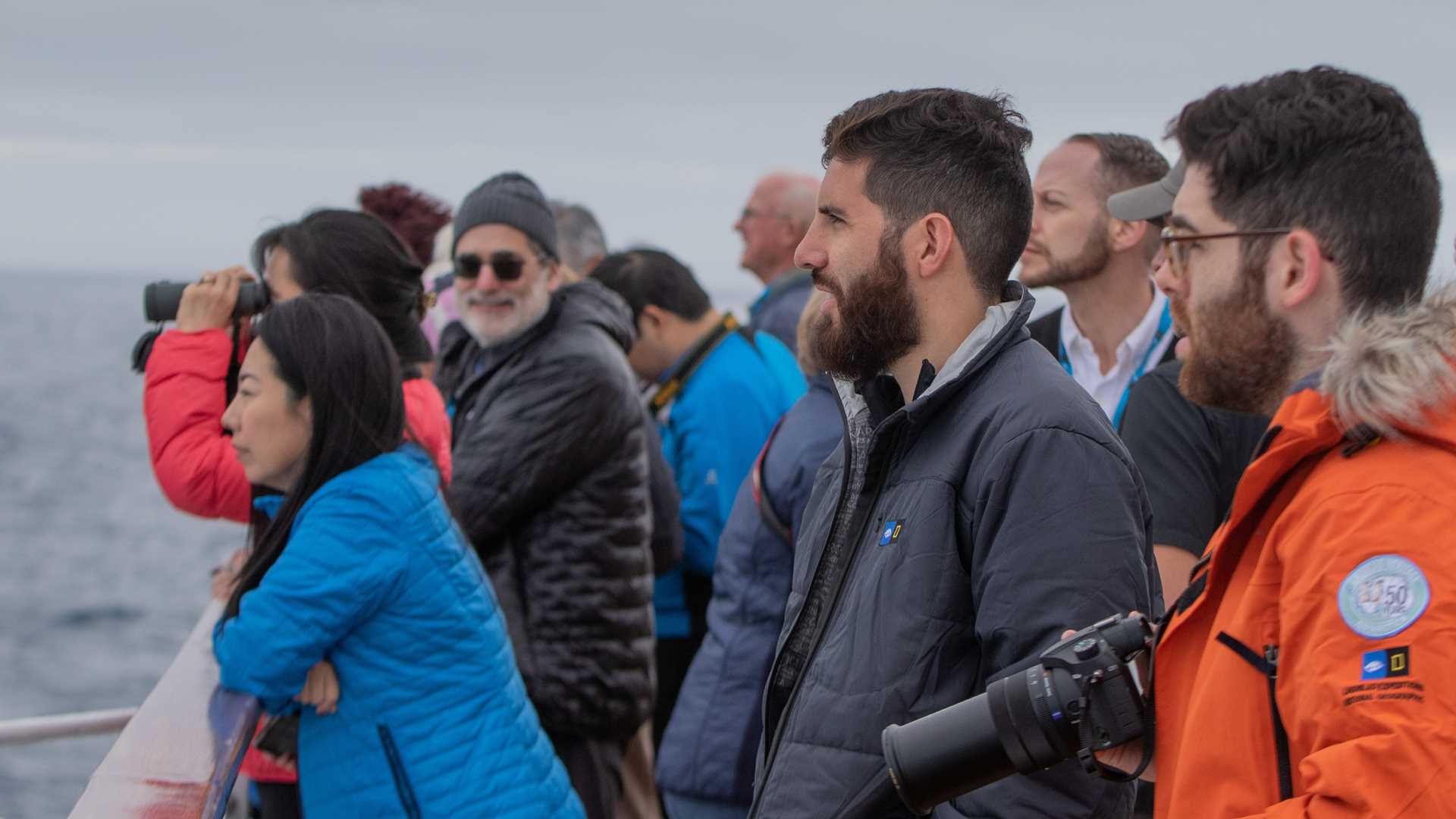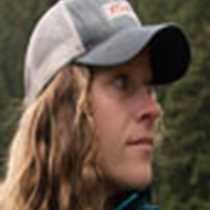This morning the guests on board National Geographic Explorer truly woke up in Antarctica. The South Shetland Islands were the ship’s first destination, and our eyes were on the prize: Half Moon Island. These barrier islands were first discovered by William Smith in 1819. Within a few short years, sealing vessels had started routing here by the dozens, taking advantage of the fur seals that called the South Shetlands home. Within only two years, these animals had been exploited nearly to the point of extinction; though under strict marine mammal protection laws, they are now recovering.
Expedition options on land at the South Shetlands included a couple of choices: the intrepid long hikers went out for a 2.5-mile walk up a beautiful, but tough, snowy trail, for the reward of the view at the top. Then they would descend past the Argentine research base, Camara, and make their way to a penguin colony before returning to the ship. The short hikers spent more time at the penguin colony, enjoying the sights of gentoo and chinstrap penguins on eggs, nearly ready for their chicks to hatch. These animals arrive to land in the southern spring, sometime in early October. Upon arrival, nest building begins, and the familiar practice of incubation and nest protection takes place. The female and male will switch duties throughout this time, allowing one parent to go out to sea to feed while the other keeps the nest warm. They have great predators to be wary of, the skua being the most worrisome of all. During this time, their young are exclusively on land and directly under parental care. Skuas, rearing chicks of their own, are often seen gliding over the penguin colonies to look for an ill-placed nest, likely an outlier without protection from all sides. When the ideal nest is spotted, they may swoop down, grabbing an egg or even a chick while carefully avoiding an angry adult penguin who has just been tricked.
When guests were finished exploring colonies and viewpoints alike, all returned to the ship for a hearty lunch.
The afternoon had its own surprises in store, as wildlife is never predictable or guaranteed. A quick jaunt over to False Bay brought the guests their first fantastic whale sighting: humpbacks right off the ship’s bow! Humpbacks migrate to Antarctica to feed during the southern summer, while they spend the winter in warmer climates. These whales were likely from Central or South America, and they were an interesting mother-and-calf pair. The young animal, recently born, was likely about six months old, and was on its first migration south. During this time, it will follow its mother, learn the route, and next year be entirely on its own!
As the ship carefully navigated, the guests looked on as the mother fed and the calf showed us its fluke and tried to dive like mom. Though the calf will still be receiving milk from its mother, it’s certainly time for it to learn how to be an adult, independent whale. Similarly, the children on board were simultaneously learning new things. The gingerbread house construction team set up shop in the lounge, engaging everyone under 18 in a fun, holiday-themed, and delicious competition.
After a wonderful first day in Antarctica, staff and crew delivered a beautiful cocktail hour, complete with evening Recap and briefing, and then joined the guests for a lovely dinner in the dining room.









